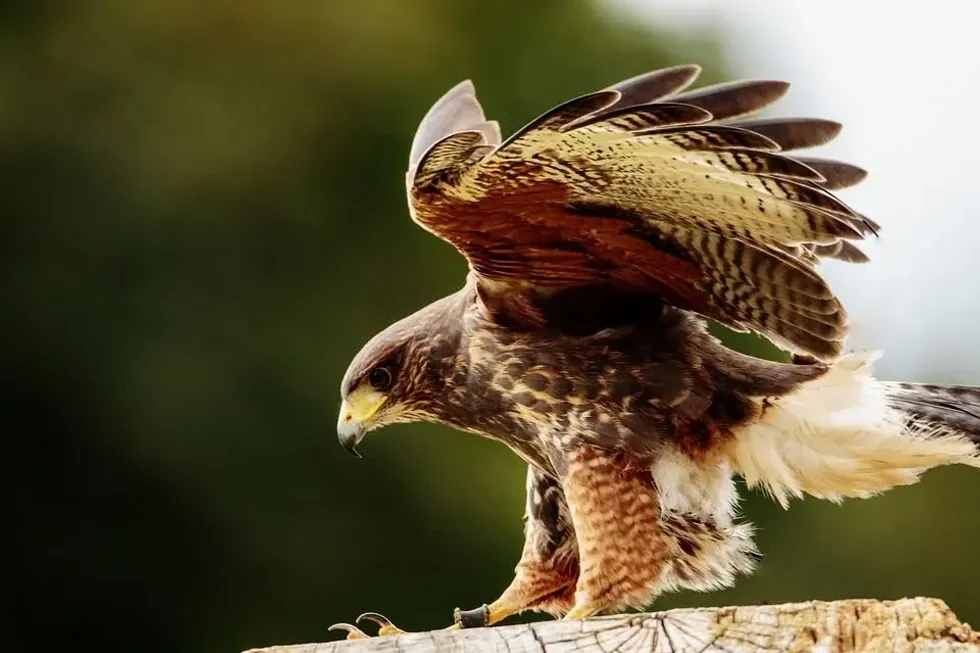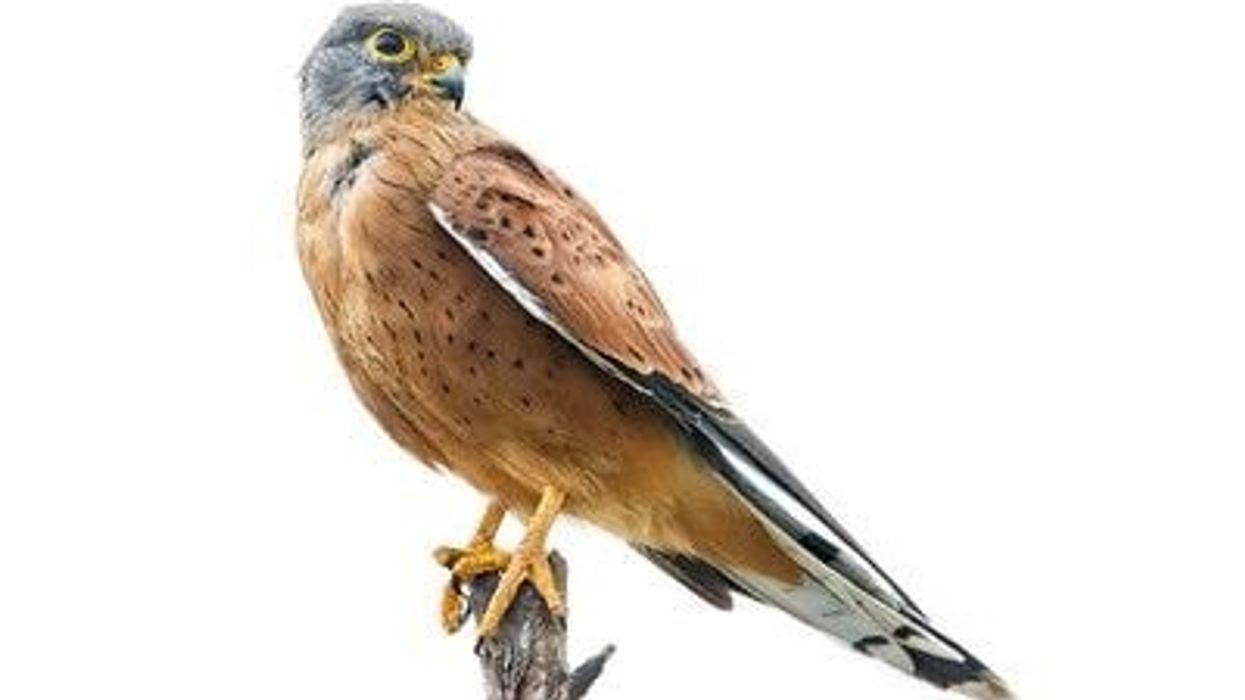There are a total of 25 species of kites in the world. The yellow-billed kite (Milvus aegyptius) is one in this family.
The yellow-billed kite (Milvus aegyptius) is primarily seen in rivers, ponds, and lakes in Central Europe, Africa, southern Africa, Asia, and Australia. The yellow-billed kite (Milvus aegyptius) is classified as a Least Concern species by the International Union For Conservation Of Nature (IUCN).
The yellow-billed kite (Milvus aegyptius) might often be confused with a hawk or a falcon, however, they are separate species. The yellow-billed kite (Milvus aegyptius) is often considered to be a subspecies, M.a parasitus of the black kite.
Larger species might be closely related to hawks. The yellow-billed kite (Milvus aegyptius) is a carnivore and feeds on fish, lizards, frogs, rats, and birds. The yellow-billed kite (Milvus aegyptius) is distinguished from other species primarily by its yellow bill.
For more relatable content, visit Kidadl's fact files on the red kite and swallow-tailed kite.
Yellow-Billed Kite Interesting Facts
What type of animal is a yellow-billed kite?
The yellow-billed kite (Milvus aegyptius) belongs to the kingdom Animalia and order Accipitriformes.
What class of animal does a yellow-billed kite belong to?
The yellow-billed kite (Milvus aegyptius) is a bird that belongs to the class Aves, family Accipitridae, and genus Milvus.
How many yellow-billed kites are there in the world?
The yellow-billed kite (Milvus aegyptius) population size is estimated at 1,000,000-2,499,999 mature individuals, however, these estimates may vary.
Where does a yellow-billed kite live?
These birds live in open areas throughout rivers, ponds, and lakes away from urban areas. They are migratory birds and migrate to parts of southern Africa as well other parts of Africa during winters and reside on higher elevations.
What is a yellow-billed kite's habitat?
These birds live in habitats including open areas throughout rivers, ponds, and lakes where they can easily access food. They can also be found near savannas and grasslands habitats. They are a migratory species and migration is primarily seasonal to escape the extreme winters.
Who do yellow-billed kites live with?
Yellow-billed kites live with other birds of their own kind however, during breeding season, they build solitary nests to raise their young. They are primarily monogamous. During the non-breeding season, they mostly stay independent and are rarely spotted in urban areas.
How long does a yellow-billed kite live?
Yellow-billed kites live up to 24 years. Their average expected life expectancy is 22 years. They are innately wild birds and they are not ideal to be bred in captivity.
How do they reproduce?
These birds attains sexual maturity by two to three years of age. Yellow-billed kite breeding is monogamous and they have various courtship rituals. Their breeding season is from March to August. After mating, female birds lay eggs from April to May and they lay about two to three eggs per clutch.
The nest is built of sticks, feathers, and other materials available within their range close to black kite nesting territory in some instances. They build nests on a tree.
Their eggs are ideally off-white in color and the incubation period 32 days. The young chicks fledge by 42-56 days. The young are protected and cared for by their parents until they are independent.
What is their conservation status?
The yellow-billed kite is classified as a Least Concern species by the IUCN Red List.
Yellow-Billed Kite Fun Facts
What do yellow-billed kites look like?
This medium-sized raptor is called yellow-billed kite and is a subspecies parasitus of the black kite, a separate species. The yellow-billed kite's wingspan is 55.1- 59 in (140-150 cm). They have an overall brown plumage and their head is relatively light compared to the rest of their body. These birds have dark bead-like eyes.
They have a yellow bill which is a hooked-shaped beak for tearing flesh. Their yellow bill is their unique identifying feature. They have tail feathers that split, forming a v-shape. They are also called fork-tailed kites. They have pale yellow legs which they use to catch their prey.
How cute are they?
These birds are not ideally cute. However, they are exotic species with an overall brown plumage. They can be seen as intra African and breeding migrants in Asia and southern Africa. They stay in other parts of the world during the remaining parts of the year.
How do they communicate?
The yellow-billed kite sound is unique and distinct in its own ways. They have loud screeches, usually beginning with a long drawn 'Kleee-errr' sound and gradually transitioning into a sharper 'Keee-keee-keee' call.
How big is a yellow-billed kite?
The yellow-billed kite size is 21.7 in (55 cm). This is bigger than an American kestrel which is 8.7-12.2 in (22-31 cm), the smallest bird of prey in North America.
How fast can a yellow-billed kite fly?
A kite bird's exact flight speed is not evaluated. They are migratory birds and also have relatively good flight speeds in order to catch their prey. The peregrine falcon is the fastest bird and can fly at 200 mph (321.9 kph).
How much does a yellow-billed kite weigh?
This bird weighs 1.2 lb (540 g) and its weight depends on its diet and feeding patterns.
What are the male and female names of the species?
These male and female birds of prey are not addressed differently. They are similar in coloration, however, they differ in size with females being comparatively larger.
What would you call a baby yellow-billed kite?
A yellow-billed kite juvenile is called a nestling. They are cared for by their parents until they fledge and are independent. Until then, the nestling stays within the nest.
What do they eat?
The yellow-billed kite diet is carnivorous. They feed and prey on small vertebrates, including insects. Apart from this, they feed on a range of meat including fish, lizards, frogs, rats like black rats, and birds.
Are they dangerous?
Yes, this bird is dangerous and best observed from a distance. They are a subspecies of the black kite. They are specifically aggressive around their nesting territories.
Would they make a good pet?
No, these are wild birds and not ideal to be adopted as a pet. This bird requires a lot of food for feeding and cannot survive without ample meat as food. If you wish to adopt a bird, you should consider other friendly and sociable birds like parrots or parakeets.
Did you know...
The yellow-billed kite is recognized by its yellow bill. Its name in Afrikaans is Geelbekwou.
The black kite is said to be one of the world's most abundant raptors. They are attracted to smoke and fires.
Is the yellow-billed kite an allopatric species?
Allopatric speciation occurs when biological populations become geographically isolated from each other and this may interfere with gene flow. This may be impacted by various other factors as well.
The yellow-billed kite subspecies M.a parasites, and M aegyptius are considered to be a separate allopatric species from the black kite. This means they differ significantly and should be considered as separate birds.
Where do yellow-billed kites migrate to?
Yellow-billed kite migration occurs to save themselves from the extreme climates and also find appropriate food to feed on. They are usually found in central Europe and Australia, but they migrate to Africa, southern Africa, and Asia during winter. This is primarily a seasonal migration. In winter, it is extremely difficult to search for food.
Most birds leave the southernmost zones by mid-March and northern zones by April. They return to their original habitat range from Africa by summer. In summer, they find access to appropriate food and shelter.
Here at Kidadl, we have carefully created lots of interesting family-friendly animal facts for everyone to discover! Learn more about some other birds from our Mississippi kite or golden eagle facts pages.
You can even occupy yourself at home by coloring in one of our free printable yellow-billed kite coloring pages.









